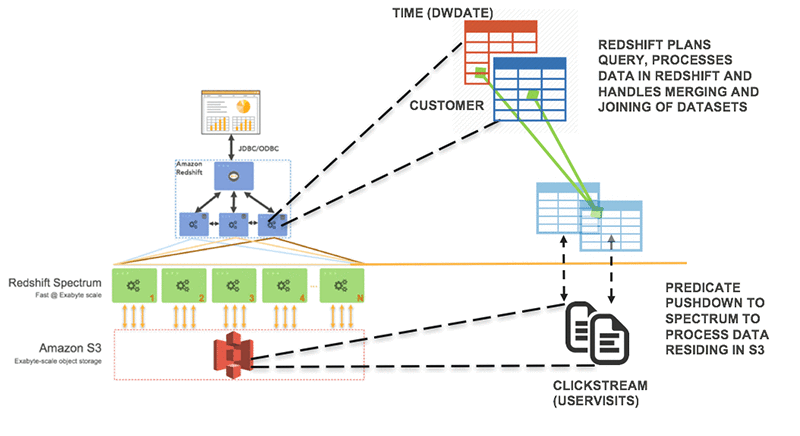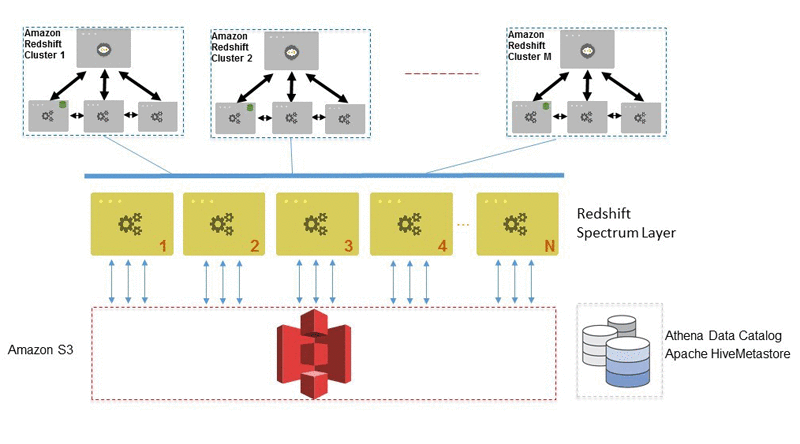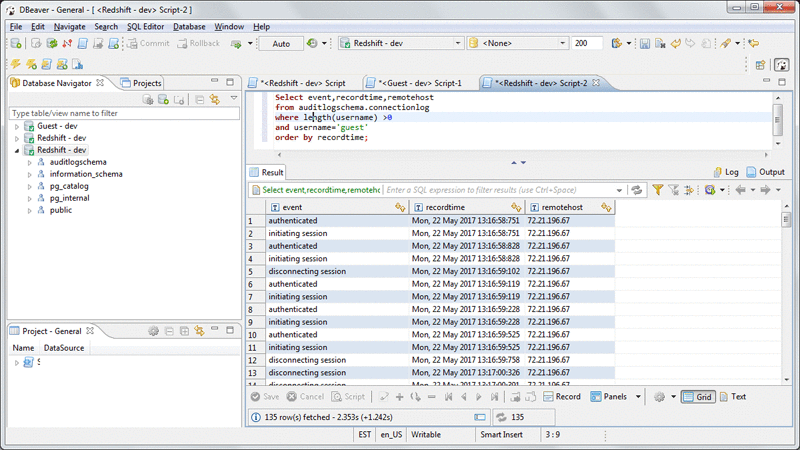AWS Big Data Blog
Tag: Amazon Redshift
Amazon Redshift Dense Compute (DC2) Nodes Deliver Twice the Performance as DC1 at the Same Price
Today, we are making our Dense Compute (DC) family faster and more cost-effective with new second-generation Dense Compute (DC2) nodes at the same price as our previous generation DC1. DC2 is designed for demanding data warehousing workloads that require low latency and high throughput. DC2 features powerful Intel E5-2686 v4 (Broadwell) CPUs, fast DDR4 memory, and NVMe-based solid state disks.
From Data Lake to Data Warehouse: Enhancing Customer 360 with Amazon Redshift Spectrum
Achieving a 360o-view of your customer has become increasingly challenging as companies embrace omni-channel strategies, engaging customers across websites, mobile, call centers, social media, physical sites, and beyond. The promise of a web where online and physical worlds blend makes understanding your customers more challenging, but also more important. Businesses that are successful in this […]
Upsert into Amazon Redshift using AWS Glue and SneaQL
This is a guest post by Jeremy Winters and Ritu Mishra, Solution Architects at Full 360. In their own words, “Full 360 is a cloud first, cloud native integrator, and true believers in the cloud since inception in 2007, our focus has been on helping customers with their journey into the cloud. Our practice areas […]
Deploy a Data Warehouse Quickly with Amazon Redshift, Amazon RDS for PostgreSQL and Tableau Server
One of the benefits of a data warehouse environment using both Amazon Redshift and Amazon RDS for PostgreSQL is that you can leverage the advantages of each service. Amazon Redshift is a high performance, petabyte-scale data warehouse service optimized for the online analytical processing (OLAP) queries typical of analytic reporting and business intelligence applications. On […]
Amazon Redshift Spectrum Extends Data Warehousing Out to Exabytes—No Loading Required
When we first looked into the possibility of building a cloud-based data warehouse many years ago, we were struck by the fact that our customers were storing ever-increasing amounts of data, and yet only a small fraction of that data ever made it into a data warehouse or Hadoop system for analysis. We saw that […]
Best Practices for Amazon Redshift Spectrum
November 2022: This post was reviewed and updated for accuracy. Amazon Redshift Spectrum enables you to run Amazon Redshift SQL queries on data that is stored in Amazon Simple Storage Service (Amazon S3). With Amazon Redshift Spectrum, you can extend the analytic power of Amazon Redshift beyond the data that is stored natively in Amazon […]
Analyze Database Audit Logs for Security and Compliance Using Amazon Redshift Spectrum
In this post, we’ll demonstrate querying the Amazon Redshift audit data logged in S3 to provide answers to common use cases described preceding.
Amazon QuickSight Adds Support for Amazon Redshift Spectrum
In April, we announced Amazon Redshift Spectrum in the AWS Blog. Redshift Spectrum is a new feature of Amazon Redshift that allows you to run complex SQL queries against exabytes of data in Amazon without having to load and transform any data. We’re happy to announce that Amazon QuickSight now supports Redshift Spectrum. Starting today, […]
Build a Healthcare Data Warehouse Using Amazon EMR, Amazon Redshift, AWS Lambda, and OMOP
In the healthcare field, data comes in all shapes and sizes. Despite efforts to standardize terminology, some concepts (e.g., blood glucose) are still often depicted in different ways. This post demonstrates how to convert an openly available dataset called MIMIC-III, which consists of de-identified medical data for about 40,000 patients, into an open source data […]
Manage Query Workloads with Query Monitoring Rules in Amazon Redshift
This blog post has been translated into Japanese and Chinese. Data warehousing workloads are known for high variability due to seasonality, potentially expensive exploratory queries, and the varying skill levels of SQL developers. To obtain high performance in the face of highly variable workloads, Amazon Redshift workload management (WLM) enables you to flexibly manage priorities and resource […]









